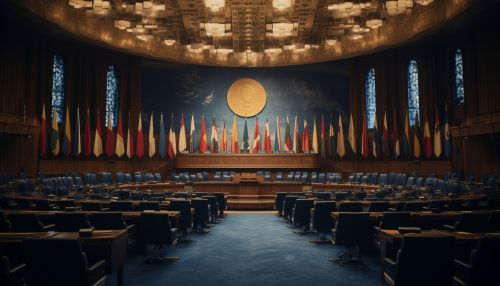Stockholm Declaration
Overview
The Stockholm Declaration, formally known as the Declaration of the United Nations Conference on the Human Environment, is a pivotal international environmental agreement that was adopted on June 16, 1972, at the United Nations Conference on the Human Environment (UNCHE) held in Stockholm, Sweden. The declaration laid the foundation for global environmental governance and marked the beginning of a new era of international environmental law.


Background
The 1960s and early 1970s marked a period of growing awareness and concern about environmental issues globally. This period saw the publication of influential works such as Rachel Carson's Silent Spring, which highlighted the devastating effects of pesticides on the environment. The Stockholm Conference was convened in response to these growing concerns and represented the first major attempt by the international community to address global environmental problems.
Conference
The UNCHE, also known as the Stockholm Conference, was held from June 5 to 16, 1972. It was attended by representatives from 113 countries, making it the largest gathering on environmental issues at the time. The conference was also notable for the participation of numerous non-governmental organizations (NGOs), reflecting the increasing role of civil society in environmental governance.
Principles
The Stockholm Declaration consists of a preamble and 26 principles. The preamble sets out the broad goals of the declaration, while the principles provide more specific guidance on various aspects of environmental management and protection. Some of the key principles include:
- Principle 1: Man has the fundamental right to freedom, equality and adequate conditions of life, in an environment of a quality that permits a life of dignity and well-being, and he bears a solemn responsibility to protect and improve the environment for present and future generations.
- Principle 2: The natural resources of the Earth, including the air, water, land, flora, and fauna, must be safeguarded for the benefit of present and future generations through careful planning or management, as appropriate.
- Principle 21: States have, in accordance with the Charter of the United Nations and the principles of international law, the sovereign right to exploit their own resources pursuant to their own environmental policies, and the responsibility to ensure that activities within their jurisdiction or control do not cause damage to the environment of other States or of areas beyond the limits of national jurisdiction.
Impact
The Stockholm Declaration has had a profound impact on the development of international environmental law. It established the principle of sustainable development, which seeks to balance economic development with environmental protection. It also recognized the right to a healthy environment and the responsibility of states to prevent environmental harm beyond their borders, principles that have been incorporated into numerous subsequent international environmental agreements.
Criticisms
Despite its significant contributions, the Stockholm Declaration has also been subject to criticism. Some critics argue that the declaration's emphasis on economic development undermines its environmental goals. Others contend that the declaration does not go far enough in recognizing the rights of indigenous peoples and other marginalized groups.
Legacy
The Stockholm Declaration remains a cornerstone of international environmental law. It led to the establishment of the United Nations Environment Programme (UNEP), the leading global environmental authority that sets the global environmental agenda. The principles of the Stockholm Declaration continue to guide international environmental policy and have been reaffirmed and expanded upon in subsequent agreements such as the Rio Declaration and the Paris Agreement on climate change.
